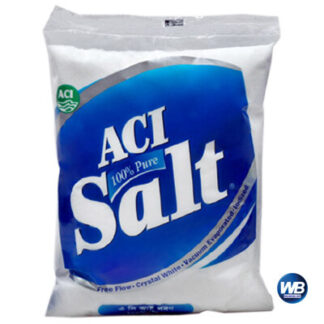SALT & SUGAR
Introduction: sugar industry has been cultivated for cultivating gur, sukkars or Khandeswari in Bangladesh and its adjoining areas since ancient times. This type of sweet pot is prepared from rhythm and date palm. The finest quality of Bengal was well-known in the 16th century. The East India Company exported huge amounts of sugar from Bengal. Description: In 1795, the export amount was 8,220,186 and in 1805 it was 33,24,168 mounds. When the sugar starts to beetle in 1840, sugarcane production from sugarcane is somewhat reduced. Later, the sugar industry was severely damaged when the farmers leaned towards jute cultivation. While sugar factories were not able to produce adequate sugar to meet its internal demand during British rule, sugar exports continued to be continued in various European countries. The deficit was mainly met through import from Java. In 1947 East Pakistan inherited only a few sugar mills. These were in Gopalpur in Rajshahi, Sitabganj of Dinajpur, Kushtia Darshan, Chittaranjan and Arichola in Dhaka and Kishoreganj in Mymensingh. All these mills had only 4,350 metric tons of crushing capacity. In 1947, only 1 percent of the total cropped area was cultivated in sugarcane. East Pakistan Industrial Development Corporation plans to set up 10 new sugar mills to increase sugar production capacity to 10 lakh metric tons. But by 1956 only 5 sugar mills were made and production stood at 26,000 metric tons. Sugar industry plays an important role in the economy of Bangladesh by creating cultivation and employment. In addition to 18,000 workers, employees and officials in sugar mills, about 4.5 lakh people, directly or indirectly, dependent on sugar industry. These industries are now under the Bangladesh Sugar and Food Industry Association. The produce of sugar mills is used for various purposes. Jolagur and Chobra are used as raw materials in other industries. A biomass factory has been set up in Darshana using ‘Spentwash’ of sugarcane griddle and waste matter. At present, sugarcane is cultivated on almost 4 lakh acres of land and it produces 72 lakh metric tons. Out of this 22 lakh 80 thousand metric tons are used in sugar and remaining are used in making molasses. Currently, there are 1,50,000 metric tons of sugar, 1 lakh metric tonnes of jhalagur and 4 lakh metric tons of chapatti in Bangladesh. Bangladesh is the lowest in terms of production per acre. It produces only 15 metric tons per acre, while 36 metric tons in Cuba, 45 metric tons in Indonesia, 55 metric tons in Australia and 70 metric tons of sugarcane in Hawaii. In Bangladesh, the rate of sugar extract is very low, only 7.4 percent. On the other hand, the quantity of sugar extract in Indonesia is 9%, 12.3% in Cuba, 12.4% in Hawaii and 15.6% in Australia. In the 1980s, the industry employed 15% of the total labor force. Under the sugar industry, 30% of the entire food industry was immovable. Bangladesh produces only 1.5% of the world’s sugar and Bangladesh is ranked 67th among world’s 130 sugar producers. Currently there are 15 sugar mills in Panchagarh, Thakurgaon, Sitbanganj, Rangpur, Shyampur, Rajshahi, Mahimganj, Joypurhat, Darshana, Kushtia, Mobarakganj, Jamalpur, Kaliyapapara, Narsingdi, Pabna, presently (2012). The annual production capacity of these sugar mills is estimated to be about 215,000 tonnes. However, sugar in the country is not fully functioning as sugar is less than the annual demand of sugar (about 400,000 tonnes). Since 1972-2009, sugar mills have been facing losses 20 times and profit of 14 times during the sugarcane season. It is estimated that 1.55 million m tons of production capacity of 15 state-owned sugar mills in the country. But in reality, calls can produce less than 1 million m tons of sugar. In the 2011-12 sugarcane season, about 4 million tons of sugarcane is produced in 1,69,000 acres of land. For the purpose of grinding and seeds, except about 10 liters of sugarcane, the remaining 30 lakhs of sugarcane sugar can be supplied. But less than half of sugarcane is served to the sugar mills. In fact, two factors are often attributed to non-availability of sugarcane in the factories, and the complexity of the peasantry is to increase the price of molasses in the market and to get the value of the salivary sugarcane. Sugar can be a potential export product and if several steps are taken, then Bangladesh can earn foreign currency from this sector, such as modernization of factories, full-scale sugarcane production, providing easy loan to the sugarcane farmers, allowing refineries to produce full sugar, modern technology for sugarcane cultivation and sugar production. Use of materials, prevent mismanagement, mill workers Preventing the misdeeds and ensuring proper and comprehensive use of by-products produced from sugar mills.
Conclusion: At the end of everybody, I want to say that sugar is our required product now. So the government will have to come forward to produce sugar. Then sugar production will increase in the country and its value will be in co-existence.
Showing all 11 results
-

Sugar 500 gm
Sale! 28.8 ৳ Add to cart -

Teer Sugar 1 kg
Sale! 62.0 ৳ Add to cart -

ACI Pure Salt 1 kg
Sale! 34.0 ৳ Add to cart -

Igloo Refined Sugar 1 kg
Sale! 72.0 ৳ Add to cart -

Jaggery (Akher Gur) 1 kg
Sale! 101.0 ৳ Add to cart -

Rock Salt (Bit Lobon) 100 gm
Sale! 39.6 ৳ Add to cart -

Fresh Super Premium (Vacuum) Salt 500 gm
Sale! 21.8 ৳ Add to cart -

Khejur gur 1 kg
Sale! 110.0 ৳ Add to cart -

khajur mithay 1 kg
Sale! 104.5 ৳ Add to cart -

Aji-No-Moto Tasting Salt 100 gm
Sale! 40.0 ৳ Add to cart -

Fresh Super Premium (Vacuum) Salt 1 kg
Sale! 39.2 ৳ Add to cart
Showing all 11 results